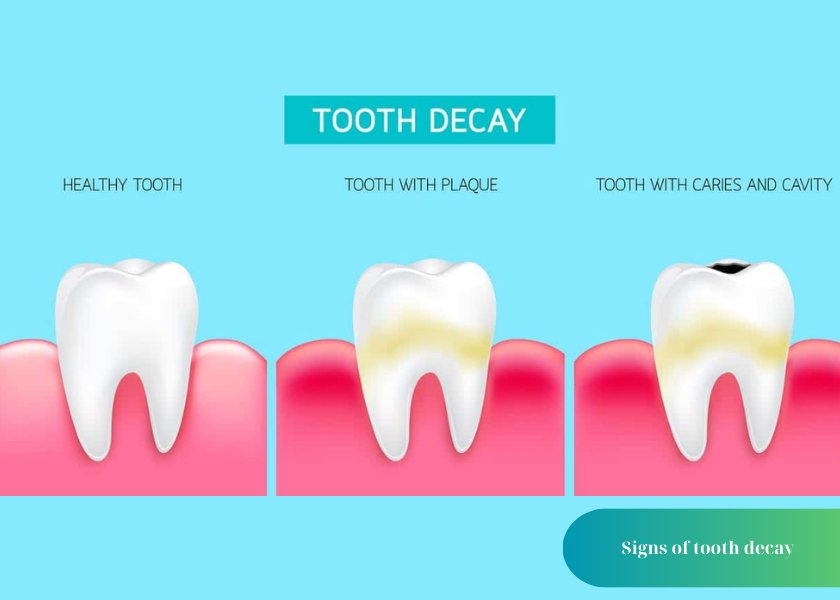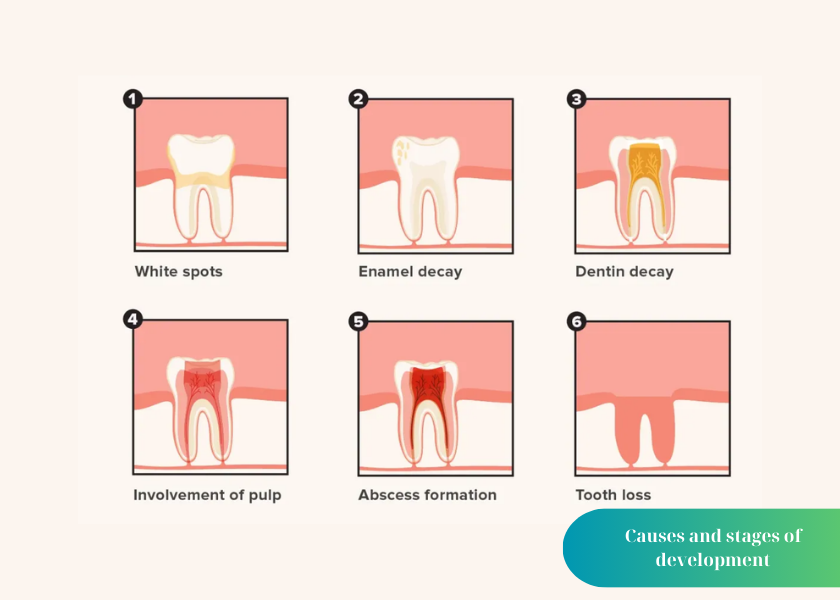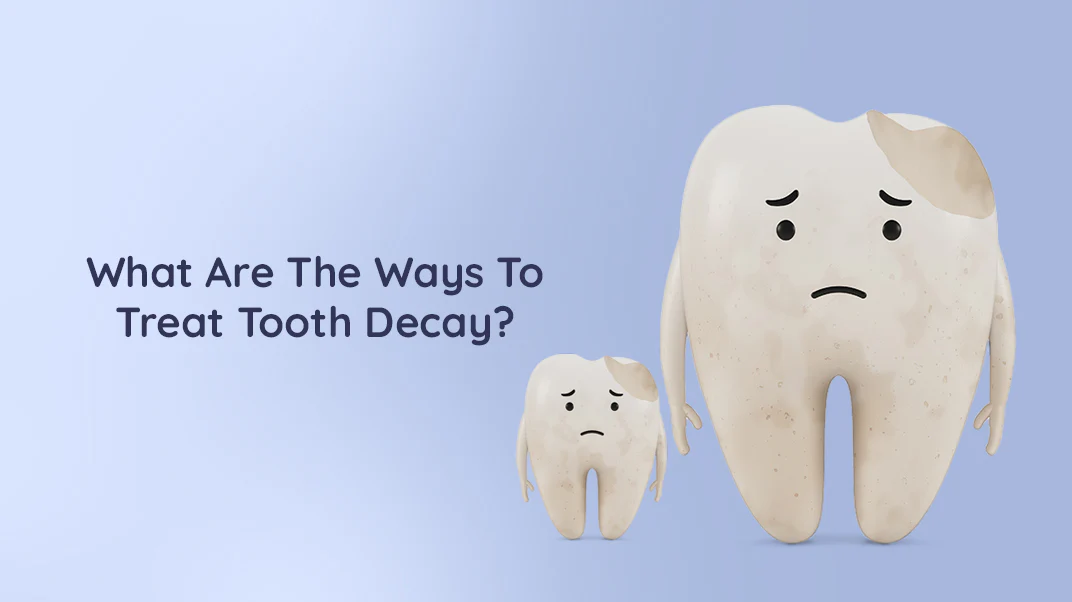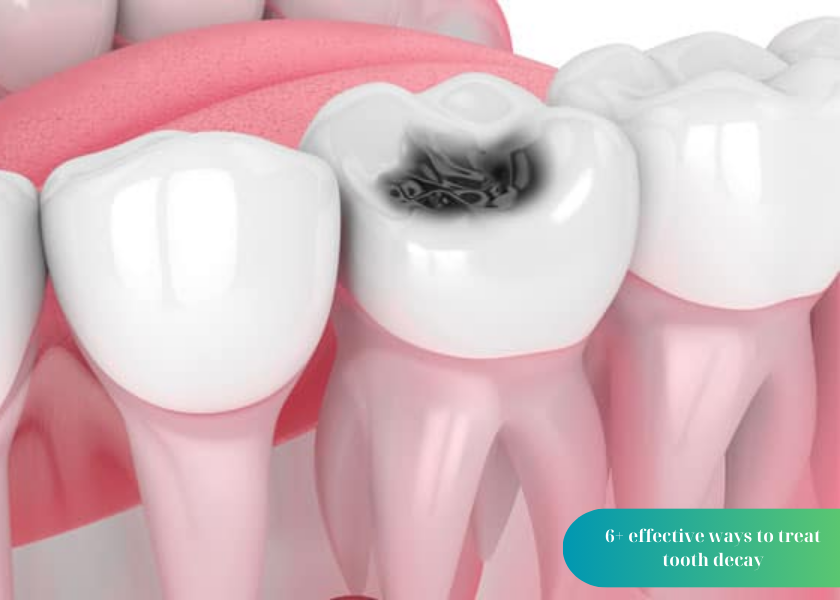6+ effective ways to treat tooth decay: Tooth decay is a common problem that both children and adults can encounter. Understanding the causes and symptoms of tooth decay helps you choose the right treatment method. The article below will answer all the common questions surrounding the topic of tooth decay. Hope you will read it to the end!
Tư vấn chuyên môn bài viết:
BÁC SĨ DƯƠNG THỊ THÙY NGA
What is tooth decay?
Tooth decay occurs when bacteria attack and destroy tooth enamel, leading to the formation of small holes in the teeth. If left untreated, tooth decay can progress and cause serious complications.
Causes of tooth decay
Tooth decay can occur for a variety of reasons in both adults and children. Here are the main causes:
- Poor dental hygiene: If teeth are not brushed properly, bacteria can grow and create plaque, leading to tooth decay. Inadequate dental hygiene is a common cause of dental problems, including tooth decay.
- Worn or broken teeth: If teeth do not have enough calcium, they can become weak and susceptible to wear or breakage. Plaque can build up in these areas, increasing the risk of tooth decay.
- Lack of saliva: Saliva helps soften food and wash away plaque. When the mouth is dry and lacks saliva, bacteria can thrive and cause tooth decay.
- Eating lots of sweet or salty foods: Foods that are high in sugar or are highly acidic can increase plaque formation and destroy tooth enamel, leading to tooth decay. Acidic snacks can also cause teeth to wear down quickly.
- Aging gums: As older adults experience receding gums, bacteria can build up at the base of the teeth, causing cavities. Receding gums is a common problem in older adults and can contribute to the development of cavities. Other health problems: Certain medical conditions, such as acid reflux, can also cause cavities. When stomach acid flows back into the mouth, it can erode teeth and lead to cavities over time.
See more: Do braces require tooth extraction? 5+ things you should know
Signs of tooth decay

Recognizing tooth decay will help you monitor your oral health and visit your dentist regularly. Here are some signs of tooth decay:
- Small holes in the teeth: When the hard tissue of the tooth is damaged, the tooth is more likely to break or crack, forming cavities inside. You may notice these holes when food gets stuck in the tooth and is difficult to remove. The bottom of the cavity is usually wider than the opening.
- Sore teeth and gums: When a tooth has cavities, the gums and the lower part of the tooth become sensitive. Leftover food, as well as hot or cold temperatures of food and air, can cause numbness and toothache.
See more: Should porcelain crowns be used with braces? 5+ things you should know
Causes and stages of development
Tooth decay is a disease that arises from a combination of many factors, leading to increasingly serious tooth damage. The main cause is often bacteria already present in the mouth, combined with plaque and food left in the teeth, creating conditions for bacteria to grow and attack the teeth. If oral care is not done properly, bacteria will continue to grow and destroy teeth, making the condition more serious.

Tooth decay develops over time through the following stages:
- Plaque formation: When consuming foods high in sugar and starch without thorough oral hygiene, bacteria in the mouth will develop. Plaque forms on the teeth and gum line, after a while it will turn into tartar. The enamel layer is thick but weak, difficult to remove and creates an environment for bacteria to thrive.
- Enamel destruction: Plaque on teeth contains acid, which easily destroys minerals in the enamel. When the enamel layer is eroded, holes will appear on the teeth. This is the first stage of tooth decay. If not treated early, bacteria will continue to attack the enamel, causing the first pain.
- Attacking the pulp: As bacteria attack deeper into the tooth, they can reach the pulp, which contains blood vessels and nerves. This causes swelling and pain, especially in cases of pulpitis. If left untreated, the infection can spread and cause serious complications.
Consequences of tooth decay
Tooth decay causes bad breath
When you have tooth decay, bacteria accumulate on leftover food particles in the mouth, causing bad breath. Therefore, if you do not take good care of your teeth, you will hardly avoid bad breath due to tooth decay.
Tooth decay causes swollen gums, pus or bleeding
When tooth decay progresses severely, white pus patches will appear on the gums. Direct intervention in the pus mass can cause bleeding gums and more serious inflammation. In addition, using toothpicks or brushing teeth too hard can also cause bleeding gums.
Tooth decay causes gingivitis
Gingivitis due to tooth decay is a common manifestation. The gums will be red, swollen, have pus and cause bad breath. You should recognize gingivitis through these signs and treat it promptly to avoid complications and damage to surrounding teeth.
See more: Why is there pain after wisdom tooth extraction – How to fix it
Some ways to treat tooth decay
Treating tooth decay with fluoride
When tooth decay first appears, fluoride treatment can help restore tooth enamel and treat early stages of tooth decay. Fluoride is commonly found in tap water, toothpaste, and mouthwash. You can use fluoride toothpaste or apply fluoride gel directly to the decayed area.
Dental filling

A filling is a treatment method when teeth are worn, have black spots or cavities. Fillings help fill in the holes and prevent further bacterial attacks. There are many different methods of filling, depending on your financial conditions and needs.
Porcelain crowns
When teeth are severely damaged or broken, porcelain crowns are an effective choice. The doctor will remove the damaged tooth tissue and use a porcelain crown to protect the tooth. Porcelain crowns can be made of ceramic, porcelain or gold, helping the tooth restore function and aesthetics.
Root canal treatment

The root canal treatment method is applied when the tooth is severely decayed and damaged to the pulp. The doctor will remove all infected pulp, then fill and cover with porcelain crown to protect the tooth. This is a method to save the tooth but needs to be done carefully to prevent re-infection.
Tooth extraction
When the tooth is too damaged, cracked and cannot be saved, tooth extraction is the last resort. After tooth extraction, you should consider implanting a new tooth to maintain a stable jaw structure and ensure chewing function.
See more: What is the Pre-Anesthesia Wisdom Tooth Extraction Method? Is It Safe?
Some ways to prevent tooth decay

Use mouthwash
To inhibit bacteria that cause tooth decay, in addition to brushing your teeth regularly, you should use mouthwash containing fluoride. Mouthwash helps prevent tooth decay and provides minerals to protect teeth.
Consider dental sealants
Dental sealants are plastic coatings that can be applied to the surface of teeth to seal off cracks and crevices, preventing food and bacteria from sticking to them. This helps protect teeth from plaque and harmful acids.
Avoid snacking and sipping a lot
Every time you eat or drink (except water), you create conditions for bacteria in your mouth to produce acids that can destroy tooth enamel. Avoid snacking and sipping a lot to minimize damage to your teeth.
Eat foods that are good for your teeth
Add calcium-rich foods such as fish, fruits and nuts to your diet to strengthen your bones and teeth. Avoid leaving food in your teeth for long periods of time, as bacteria thrive in them and cause cavities. Foods such as fresh fruits and vegetables help increase saliva flow, while unsweetened coffee, tea and sugar-free gum help clean your mouth.
Fluoride treatment
Your dentist may recommend regular fluoride treatments to help prevent cavities. They may also provide self-adjusting aligners with prescription fluoride if you are at high risk of cavities.
Antibacterial treatment
If you have cavities due to specific causes or associated medical conditions, your dentist may recommend antibacterial mouthwashes or other treatments to inhibit cavity-causing bacteria.
Combination treatment
Chewing xylitol-containing gum, combined with prescription fluoride and antibacterial mouthwash, may reduce your risk of cavities.
The above article by BeamDental has compiled complete information about the causes, symptoms and ways to treat tooth decay. BeamDental hopes that this information will be useful to you. If you have questions about dentistry and need advice, please contact the hotline to receive free advice directly from the dentist!
See more: What is a dental bridge? and 5+ information you need to know
BEAMDENTAL – HỆ THỐNG NHA KHOA TIÊU CHUẨN HÀNG ĐẦU
CHI NHÁNH HÀ NỘI
CS1: 7B Thi Sách, Ngô Thì Nhậm, Hai Bà Trưng, Hà Nội - 0934.61.9090
CS2: 98C Chiến Thắng, Văn Quán, Hà Đông - 0934.61.9090
CHI NHÁNH TP.HỒ CHÍ MINH (HCM)
56 Nguyễn Đình Chiểu, Đa Kao, Quận 1, Tp.Hồ Chí Minh - 0766.00.8080
GIỜ HOẠT ĐỘNG:
09h00 – 21h00. Tất cả các ngày trong tuần
Link web: beamdental.com.vn



